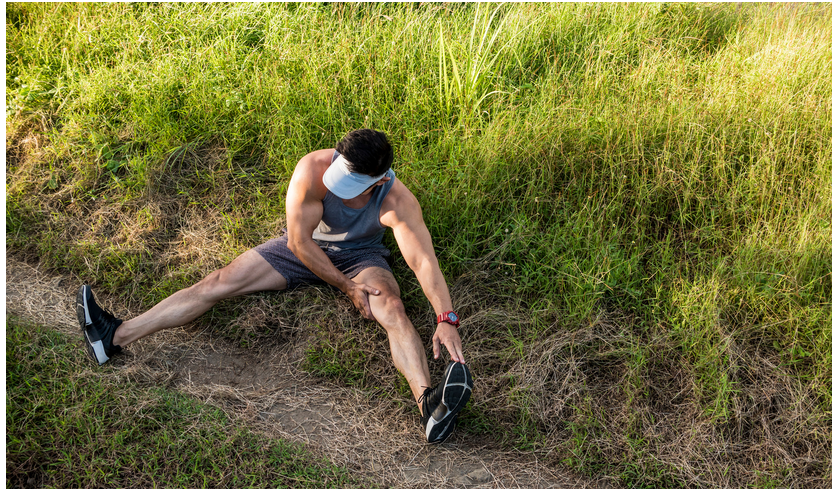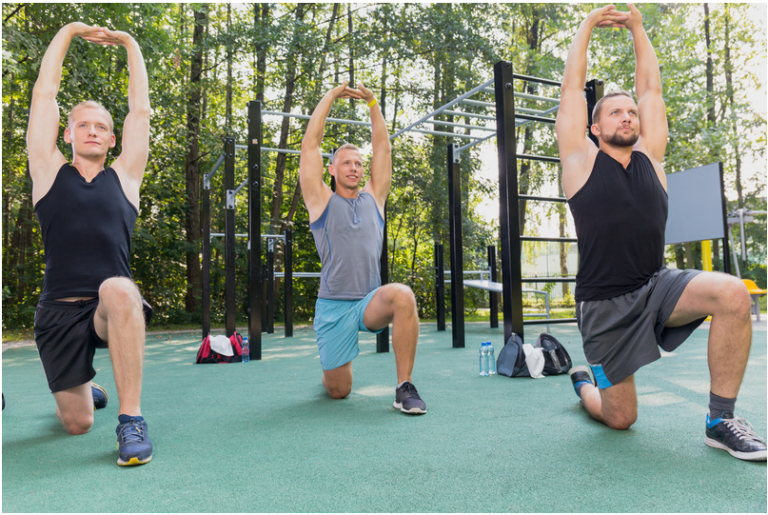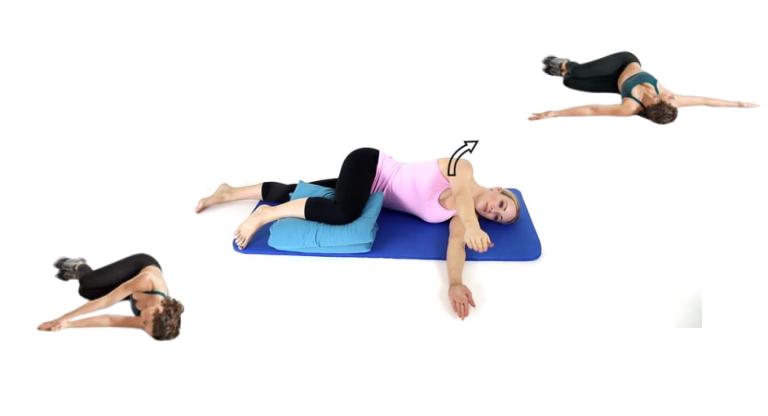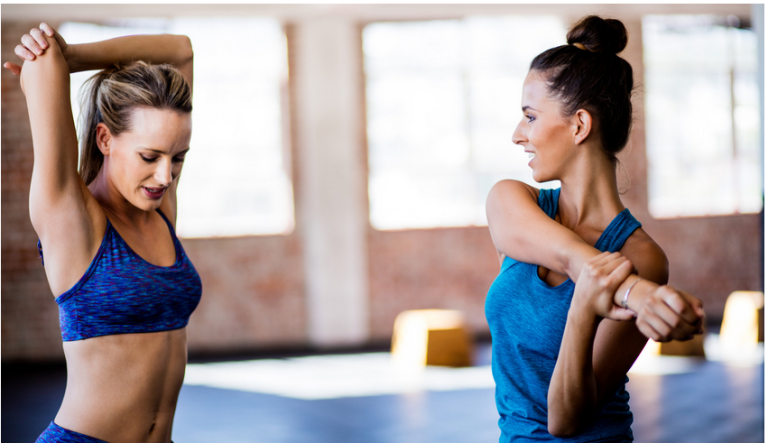
Adductor Stretching: 5 Exercises to Loosen Your Tight Muscles

If you’ve ever felt a sharp pain or tightness in your groin or inner thigh, you might have experienced an adductor strain. The adductor muscles are the ones that pull your legs together and help stabilize your hips. They should be more noticed in stretching and strengthening routines, leading to injury and reduced mobility.
In this article, you’ll learn why adductor stretching is important, how to do it properly, and the best exercises to prevent and heal adductor strains. Whether you’re a runner, a soccer player, or someone who wants to improve their flexibility and posture, these adductor stretches will help you achieve your goals.
What are the adductor muscles, and why are they important?

The adductor muscles are a group of five muscles that run along the inside of your thigh, from your pelvis to your knee. They are:
- The adductor magnus is the largest and strongest adductor muscle, extending from the pubis to the femur and the tibia. It helps with hip extension and flexion, as well as adduction and internal rotation of the leg.
- Adductor longus: a long and thin muscle that originates from the pubis and inserts into the femur. It helps with hip flexion and adduction of the leg.
- The adductor brevis is a short and thick muscle under the adductor longus. It also originates from the pubis and inserts into the femur. It helps with hip flexion and adduction of the leg.
- Gracilis: a long and slender muscle that runs from the pubis to the tibia. It is the only adductor muscle that crosses the knee joint. It helps with hip adduction and flexion, knee flexion, and internal leg rotation.
- Pectineus: a small and flat muscle at the upper part of the inner thigh. It originates from the pubis and inserts into the femur. It helps with hip flexion and adduction of the leg.
The adductor muscles are important for several reasons. They help you perform movements such as kicking, running, jumping, and changing directions. They also help stabilize your pelvis and lower back, improving your posture and preventing lower back pain. They also support your knee joint and prevent excessive stress on the ligaments and cartilage.
What causes adductor strains?
An adductor strain is a common sports injury when one or more adductor muscles are overstretched or torn. This can happen due to sudden or forceful movements, such as sprinting, cutting, or kicking. It can also happen due to overuse, lack of warm-up, poor flexibility, or muscle imbalance.
Some of the symptoms of an adductor strain are:
- Pain or tenderness in the groin or inner thigh
- Swelling or bruising in the affected area
- Difficulty or pain when moving the leg or walking
- Reduced range of motion or strength in the hip or knee
The severity of an adductor strain can vary from mild to severe, depending on the extent of the damage to the muscle fibers. A mild strain may cause discomfort and stiffness but not affect your daily activities. A moderate strain may cause more pain and swelling and limit movement and performance. A severe strain may cause intense pain and swelling and prevent you from walking or moving your leg.
How do we prevent them?
The best way to prevent adductor strains is to keep your adductor muscles strong and flexible. You can do this by:
- Warm up properly before any physical activity, especially sports that require a lot of leg movements, such as soccer, hockey, tennis, or rugby.
- Stretching your adductor muscles regularly, especially after exercise or prolonged sitting.
- You are strengthening your adductor muscles with exercises that target them, such as squats, lunges, or leg presses.
- Balance your adductor muscles with your abductor muscles, which are the ones that move your legs apart and help stabilize your hips. You can do this by doing exercises that work both muscle groups, such as side lunges, clamshells, or lateral band walks.
- She is resting and recovering adequately between workouts and avoiding overtraining or fatigue.
- Seeking medical advice if you experience any signs or symptoms of an adductor strain and following the RICE protocol (rest, ice, compression, elevation) to reduce inflammation and pain.
How do adductors stretch properly?

Adductor stretching is a great way to improve your flexibility and mobility in your hips and legs. It can also help prevent and heal adductor strains and reduce the risk of other injuries and pains. However, it would help if you did it properly to get the most benefits from adductor stretching. Here are some tips on how to do adductor stretching correctly:
Warm up before stretching
Stretching cold muscles can cause more harm than good, as they are more prone to injury and less responsive to stretching. You can warm up by doing some light cardio, such as jogging, cycling, or skipping, for 5 to 10 minutes or by doing some dynamic stretches, such as leg swings, high knees, or butt kicks, for the same duration.
Stretch gently and gradually
Don’t force or bounce your stretches, as this can cause micro-tears in your muscles, making them tighter and weaker. Instead, stretch slowly and smoothly until you feel a mild to moderate stretch inside your thigh. Hold the stretch for 15 to 30 seconds, breathing deeply and relaxing your muscles. Repeat the stretch 2 to 3 times per leg, and switch sides.
Stretch both sides equally
Don’t neglect one side of your body, as this can create a muscle imbalance and affect your posture and alignment. Make sure you stretch both legs equally and pay attention to any differences in flexibility or pain between them. If one side is tighter or more painful than the other, you may need to stretch it more often or longer or seek professional help to address the underlying cause.
Stretch regularly and consistently
It would help if you did it regularly and consistently to see lasting results from adductor stretching. Aim to stretch your adductor muscles thrice weekly, preferably after exercise or before bed. You can also stretch them throughout the day, especially if you sit a lot or do activities that tighten them, such as driving, cycling, or horse riding.
Listen to your body and modify it as needed
Adductor stretching should feel good and comfortable, not painful or uncomfortable. If you feel any pain, discomfort, or tingling in your groin, thigh, or knee, stop the stretch and consult your doctor or physical therapist. You may need to modify the stretch by reducing the intensity, duration, or frequency or using props, such as a towel, a strap, or a pillow, to support your leg or hip.
What are the best adductor stretches to do?
There are many adductor stretches you can do, but some of the best ones are:
1. Butterfly stretch
This is a classic adductor stretch that targets the inner thigh muscles. To do it:
- Sit on the floor with your back straight and your knees bent.
- Bring the soles of your feet together and pull them towards your groin.
- Hold your ankles or feet with your hands and gently press your knees towards the floor. You should feel a stretch on the inside of your thighs.
- Hold this stretch for 15 to 30 seconds, then release and repeat 2 to 3 times.
2. Wide-legged forward fold
This is a great adductor stretch that also stretches your hamstrings, lower back, and calves. To do it, stand with your feet wide apart and your toes pointing forward. Keep your legs straight and your back flat. Hinge at your hips and fold forward, bringing your hands to the floor or your ankles or shins. You should feel a stretch on the inside and back of your legs. Hold this stretch for 15 to 30 seconds, then rinse and repeat 2 to 3 times.
3. Side lunge
This dynamic adductor stretch also works your glutes, quads, and core. To do it, stand with your feet wide apart and your toes pointing forward. Shift your weight to your right leg and bend your right knee, keeping your left leg straight and your left foot flat on the floor. You should feel a stretch on the inside of your left thigh. Hold this stretch for 15 to 30 seconds, then switch sides and repeat. Do 2 to 3 sets per side.
4. Kneeling adductor stretch
This is a deep adductor stretch that also stretches your hip flexors and groin. To do it:
- Kneel on the floor with your right knee bent and your right foot flat.
- Extend your left leg to the side and place your left foot on the floor, keeping your left leg straight and your left toes pointing up.
- Place your hands on the floor before you and lean forward, keeping your back straight and your hips square. You should feel a stretch inside your left thigh and hip.
- Hold this stretch for 15 to 30 seconds, then switch sides and repeat.
- Do 2 to 3 sets per side.
5. Lying adductor stretch
This gentle adductor stretch also relaxes your lower back and hips. To do it, lie on your back with your legs straight and your feet together. Bend your right knee and bring it towards your chest, then drop it to the left side of your body, keeping your left leg straight and your right foot flat on the floor. You should feel a stretch inside your right thigh and hip. Hold this stretch for 15 to 30 seconds, then switch sides and repeat. Do 2 to 3 sets per side.
How do I use adductor stretching for rehab and prevention?
Adductor stretching can be very helpful for rehabilitating and preventing adductor strains and improving your overall health and performance. However, you must be careful and follow some guidelines to avoid further injury or complications. Here are some tips on how to use adductor stretching for rehab and prevention:
- Consult your doctor or physical therapist before starting any stretching or exercise program, especially if you have an acute or severe adductor strain or any other medical condition that may affect your ability to stretch safely and effectively.
- Start slowly and gradually, and progress at your own pace. Don’t rush or push yourself beyond your comfort level, as this can cause more damage and delay your recovery. Listen to your body and stop or modify the stretch if you feel any pain, discomfort, or tingling in your groin, thigh, or knee.
- According to your doctor’s or physical therapist’s advice, combine adductor stretching with other forms of treatment like ice, heat, massage, anti-inflammatory medication, or compression. These can help reduce inflammation, pain, and swelling and speed up healing.
- According to your doctor’s or physical therapist’s advice, combine adductor stretching with other forms of exercise, such as strengthening, balance, and coordination exercises. These can help restore your muscle function, stability, and mobility and prevent future injuries and pains.
- Use adductor stretching as part of your warm-up and cool-down routine before and after any physical activity, especially sports that require a lot of leg movements, such as soccer, hockey, tennis, or rugby. This can help prepare your muscles for the activity and prevent them from tightening or cramping afterward.
Summary and key points
Adductor stretching is a great way to improve your flexibility and mobility in your hips and legs. It can also help prevent and heal adductor strains and reduce the risk of other injuries and pains. Here are some key points to remember:
- The adductor muscles are the ones that pull your legs together and help stabilize your hips. They should be more noticed in stretching and strengthening routines, leading to injury and reduced mobility.
- An adductor strain is a common sports injury when one or more adductor muscles are overstretched or torn. This can happen due to sudden or forceful movements, such as sprinting, cutting, or kicking. It can also happen due to overuse, lack of warm-up, poor flexibility, or muscle imbalance.
- The best way to prevent adductor strains is to keep your adductor muscles strong and flexible. This can be done by warming up properly before any physical activity, stretching your adductor muscles regularly, strengthening your adductor muscles with exercises that target them, balancing your adductor muscles with your abductor muscles, resting and recovering adequately between workouts, and seeking medical advice if you experience any signs or symptoms of an adductor strain.
The best adductor stretches are:
- The butterfly stretch.
- The wide-legged forward fold.
- The side lunge.
- The kneeling adductor stretch.
- The lying adductor stretch.
These stretches target the inner thigh muscles and help improve your range of motion and posture. To do them properly, you need to warm up before stretching, stretch gently and gradually, stretch both sides equally, stretch regularly and consistently, and listen to your body and modify as needed.
Adductor stretching can be very helpful for rehabilitating and preventing adductor strains and improving your overall health and performance. However, you must be careful and follow some guidelines to avoid further injury or complications.
You need to consult your doctor or physical therapist before starting any stretching or exercise program; start slowly and gradually and progress at your own pace; combine adductor stretching with other forms of treatment and exercise; and use adductor stretching as part of your warm-up and cool-down routine.
I hope you enjoyed this article and learned something new about adductor stretching. If you have any questions, comments, or feedback, please leave them below. To learn more about stretching, exercise, and rehab, check out www.rehabmypatient.com, the best exercise prescription software for physical therapists and fitness professionals. Thank you for reading, and happy stretching!
FAQs
Q: What are the benefits of adductor stretching?
A: Adductor stretching can help improve your flexibility and mobility in your hips and legs, enhancing your performance and preventing injuries. It can also help reduce pain and tightness in your groin and inner thigh, improving your posture and comfort.
Q: How often should I do adductor stretching?
A: You should aim to do adductor stretching at least three times a week, preferably after exercise or before bed. You can also do it throughout the day, especially if you sit a lot or do activities that tighten your adductor muscles.
Q: How long should I hold each adductor stretched?
A: You should hold each adductor stretch for 15 to 30 seconds, breathing deeply and relaxing your muscles. You can repeat each stretch 2 to 3 times per leg and switch sides.
Q: How can I make adductor stretching more challenging or easier?
A: You can make adductor stretching more challenging or easier by adjusting the stretch’s intensity, duration, or frequency. You can also use props, such as a towel, a strap, or a pillow, to support your leg or hip or to increase the range of motion. You can also vary the angle or position of your leg or hip to target different parts of your adductor muscles.
Q: What common mistakes or pitfalls do you avoid when doing adductor stretching?
A: Some common mistakes or pitfalls to avoid when doing adductor stretching are:
- Stretching cold muscles causes injury and reduces the effectiveness of the stretch. It would help to warm up before stretching by doing light cardio or dynamic stretches.
- Forcing or bouncing your stretches can cause micro-tears in your muscles, making them tighter and weaker. It would help if you always stretched gently and gradually until you feel a mild to moderate stretch inside your thigh.
- Neglecting one side of your body can create muscle imbalance and affect your posture and alignment. You should always stretch both legs equally and pay attention to any differences in flexibility or pain between them.
- Stretching too much or too little can either overstretch or understretch your muscles and affect their function and health. It would help if you stretched regularly and consistently but not excessively or infrequently.
- Stretching through pain, discomfort, or tingling can indicate an injury or nerve compression. You should always listen to your body, stop or modify the stretch if you feel any of these sensations, and consult your doctor or physical therapist if they persist or worsen.
References
- Current Clinical Concepts: Exercise and Load Management of Adductor Strains, Adductor Ruptures, and Long-Standing Adductor-Related Groin Pain: This article provides an overview of the different types of adductor injuries, their diagnosis, prognosis, mechanisms, and risk factors, as well as the best evidence-based management strategies, which include specific exercises and loading strategies. 1
- Acute Effects of Various Stretching Techniques on Range of Motion: A Systematic Review with Meta-Analysis This article reviews the effects of different stretching techniques on joint range of motion and finds that a single amount of stretching can provide acute, small-magnitude improvements for most range of motion tests. It also discusses the moderating variables that may influence the extent of stretch-induced flexibility, such as muscles tested, stretch techniques, intensity, sex, and trained state. 2
- How to perform the adductor stretch: This article explains how to do the adductor stretch correctly and describes the benefits and precautions of this stretch. It also provides a video demonstration and a step-by-step guide to the stretch. 3



